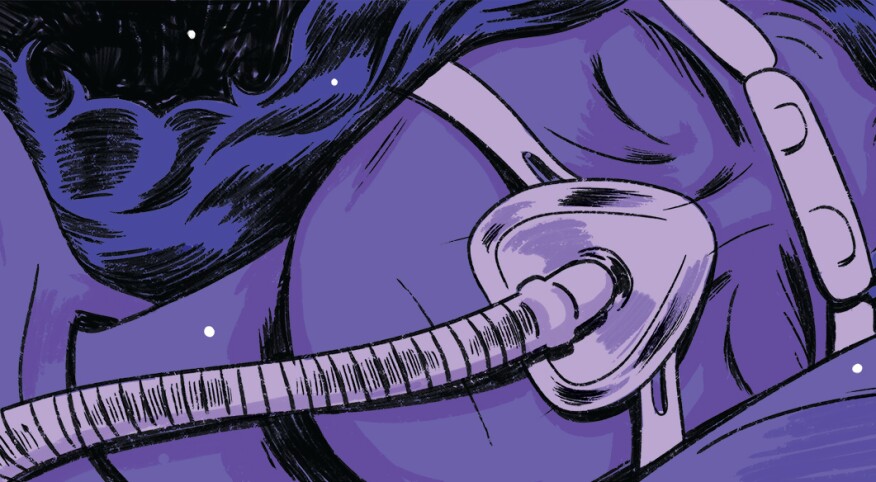My journey with a CPAP (continuous positive airway pressure) machine began well over 10 years ago when my primary care physician recommended I get a sleep study done for potential obstructive sleep apnea — basically nighttime breathing cessation. I was overweight, had enlarged tonsils and was exhibiting some classic symptoms.
This meant sleeping over in an uncomfortable hospital setting, hooked up to wires and monitors all night long, in order to determine what seemed inevitable: a diagnosis of sleep apnea. And not just any old sleep apnea — severe sleep apnea.
From there I did what many newly diagnosed patients do — nothing. That’s right. I’m an intelligent, well-informed woman who — in spite of the known serious health risks (primarily cardiac-related) of not going through the next steps to fix my sleep apnea — did nothing. I have no valid excuses. Sure, the slew of paperwork and appointments, along with the idea of sleeping in a mask every night in my 40s, was daunting. But I entered into the oh-so-common world of sleep apnea denial and went about my life.
Fast forward those 10 years — adding in a few more health issues and a realization that I was waking up occasionally at night gasping for air, as well as experiencing some daytime sleepiness and nighttime snoring — and the perfect storm existed for me to embark on this journey again. This time, the process and technology had improved. I was able to do my sleep study in the convenience and comfort of my own home.
Once diagnosed with multiple episodes of my breathing stopping during the night, the CPAP machine was sent directly to my home. With one FaceTime call later with a respiratory therapist, I was good to go.
But as anyone who has been there will tell you, these are just a few hurdles that I had to overcome. I still had to master how to use the contraption, be willing to become compliant using it, and endure the steeper parts of the learning curve. It can feel a bit claustrophobic to have a tight-fitting mask on, requires time to get used to the sensation of forced air coming through the mask, and now usually takes me longer to fall asleep. Luckily I don’t suffer from some of the other common complaints, including a dry mouth and stuffy nose in the morning. The best advice I got was from another doctor: Don’t. Give. Up.
Who among us would suddenly go to bed one night and hook up to a mask, tubing and machine — and immediately find it easy? No one. There is a lot to get used to, for sure. Words of wisdom I received stuck with me, as did the knowledge I gained via Google that if I didn’t make this a part of my nightly sleep routine, even bigger health risks loomed on the horizon. I also got a great piece of advice from a friend — a veteran CPAP user — to download an app to my phone that gives me a nightly score of how I performed. I’m evaluated in the areas of usage (at least four hours are recommended), mask/seal fit, how often I take off the mask, and the number of nonbreathing events I have per hour.
Being in direct control of my outcomes and seeing those results in real time are motivating for me, and I’m about a month into using my CPAP. To be honest, while I had to get over the logistical annoyances of using one and the insult to my pride (I’m too young for this!), following the advice of others and a desire toward greater health have kept me going. And now I get to reap the rewards of sticking with it: I feel sharper and more alert during the day; I have more energy; I’m living with the knowledge that I’m doing the right thing for my body; and I’m preserving my cardiac and cognitive health for the future.
So, let me be that friend that I had to YOU: Jump in and do it. Don’t give up. Communicate as needed with your health care provider. Some additional benefits might include reduced depression and weight loss. You won’t regret it.

Jackie Ferrentino









